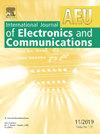认知无线电应用中多种MIMO天线设计综述
IF 3.2
3区 计算机科学
Q2 ENGINEERING, ELECTRICAL & ELECTRONIC
Aeu-International Journal of Electronics and Communications
Pub Date : 2025-07-12
DOI:10.1016/j.aeue.2025.155930
引用次数: 0
摘要
认知无线电(CR)系统要求天线具有适应性,能够有效利用可用频谱,同时确保动态实时条件下的最佳运行效率。为了满足这些标准,多输入多输出(MIMO)天线必须具备宽带或多频段频率工作能力,集成可重构性,保持紧凑的架构设计,并实现元件之间的显著隔离以减轻相互干扰。这篇综述批判性地评估了MIMO天线的各种分类,包括超宽带(UWB)天线、双超宽带天线、滤波器和可重构天线,并研究了实现空间、极化和模式多样性的方法。采用复杂的优化方法和仿真工具来提高天线性能,评估集中在关键参数上,如回波损耗、增益、带宽和分集增益。此外,该综述还解决了与将MIMO天线集成到CR平台相关的挑战,包括干扰管理和保持一贯的高性能水平。在预测未来的进展时,重点放在智能材料、创新制造技术和ML方法在增强下一代CR应用中的重要性上。本综述还强调了未来无线通信系统中MIMO天线发展的新兴研究轨迹和潜在途径。本文章由计算机程序翻译,如有差异,请以英文原文为准。
A review of diverse MIMO antennas design for Cognitive Radio applications
Cognitive Radio (CR) systems require antennas that exhibit adaptability, enabling the efficient utilization of available spectrum while ensuring optimal operational efficiency under dynamic real-time conditions. To fulfill these criteria, multiple input multiple output (MIMO) antennas must possess the capability for broad or multi-band frequency operation, integrate reconfigurability, maintain compact architectural designs, and achieve significant isolation between elements to mitigate mutual interference. This review critically assesses various classifications of MIMO antennas, including ultra-wideband (UWB) antennas, dual UWB antennas, filtenna, and reconfigurable antennas, and investigates methodologies for attaining spatial, polarization, and pattern diversity. Sophisticated optimization methodologies and simulation tools are applied to enhance antenna performance, with evaluations centered on crucial parameters such as return loss, gain, bandwidth, and diversity gain. Furthermore, the review addresses the challenges associated with the integration of MIMO antennas into CR platforms, encompassing interference management and the maintenance of consistently high performance levels. In projecting future advancements, emphasis is placed on the significance of smart materials, innovative fabrication techniques, and ML methodologies in the enhancement of next-generation CR applications. This review also highlights emerging research trajectories and potential avenues in the development of MIMO antennas for future wireless communication systems.
求助全文
通过发布文献求助,成功后即可免费获取论文全文。
去求助
来源期刊
CiteScore
6.90
自引率
18.80%
发文量
292
审稿时长
4.9 months
期刊介绍:
AEÜ is an international scientific journal which publishes both original works and invited tutorials. The journal''s scope covers all aspects of theory and design of circuits, systems and devices for electronics, signal processing, and communication, including:
signal and system theory, digital signal processing
network theory and circuit design
information theory, communication theory and techniques, modulation, source and channel coding
switching theory and techniques, communication protocols
optical communications
microwave theory and techniques, radar, sonar
antennas, wave propagation
AEÜ publishes full papers and letters with very short turn around time but a high standard review process. Review cycles are typically finished within twelve weeks by application of modern electronic communication facilities.

 求助内容:
求助内容: 应助结果提醒方式:
应助结果提醒方式:


